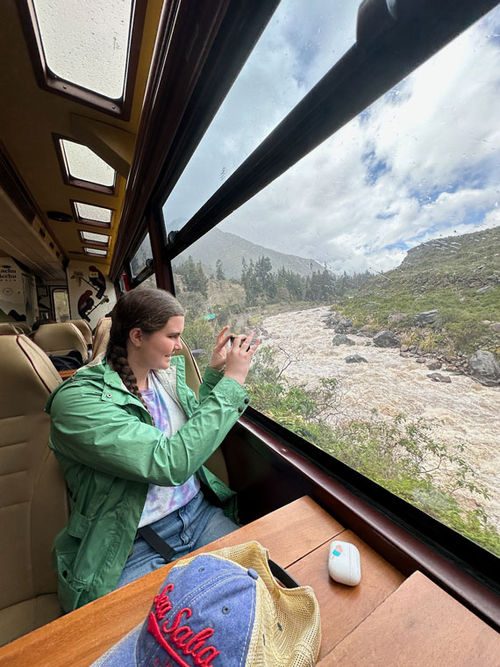CUSCO, Peru -- A trip to Peru in mid-March revealed that the country, which for several months starting last November was embroiled in deadly political protests, is now open and things appear to have returned to normal.
Travelers may even find that the lack of crowds make this an ideal time to visit its top attraction, Macchu Picchu, normally so in demand that tickets to enter must be secured months in advance.
The U.S. State Department's Travel Advisory for Peru remains at Level 3, "Reconsider Travel," but it has not been updated since Dec. 22, just 15 days after the first protest followed former President Pedro Castillo's arrest in Lima. (Other countries popular with American travelers that also have Level 3 advisories include Jamaica, Colombia and Egypt.)
In the months that followed the onset of the protests, hotels, tour operators and travel agencies watched helplessly as their Q1 and Q2 reservations vanished after the Cusco airport as well as four others suspended operations after being stormed by protesters. Stranded travelers were twice evacuated by helicopter from Machu Picchu due to protestors blocking the train tracks.
Cusco's airport reopened Jan. 15, followed one month later by Machu Picchu on Feb. 15, after an agreement was reached by local governments and the protestors to guarantee the security of the Unesco World Heritage Site and services to reach it.
Still, Peru is trapped in a loop of misinformation, causing even seasoned travelers to believe the country is still under lockdown. This was evident when, in response to my posts on social media, my inbox began to ping with questions from friends and strangers alike, such as "I thought Machu Picchu was closed?" "We have a trip planned in May and are considering delaying. What is your experience on the ground?" And "my son is supposed to go next month, and I'm worried. Is it safe?"
I was delighted to field these questions because, yes, not only did my family and I feel entirely safe, including during the four days we explored Cusco on our own, but we experienced some of Peru's top attractions in peace, without any crowds.
The choice to visit in March was not a difficult one, in part because we were guests of Inkaterra Hotels, a nearly 50-year-old, Peru-based ecotourism company. I trusted its reputation as a tourism leader with such longstanding roots in the region.
According to Inkaterra, it has not had to make any changes to its itineraries or programs because everything is back to normal. "The constitution has prevailed," said Jose Koechlin, founder and CEO of Inkaterra. "Today Peru is a safe place to travel."

Riding Inca Rail through the Sacred Valley from Ollantaytambo to Machu Picchu. Inkaterra staff members meet every arriving guest at the station. Photo Credit: Courtesy of Megan Padilla
Prior to leaving, I scoured news reports reinforcing that protests had lost steam and that much of the country, particularly the Cusco, Sacred Valley and Machu Picchu area where our trip was focused, had largely returned to normal. As an extra precaution, I registered our visit with the U.S. State Department and set ground rules with my family that if we sensed any tension, we'd immediately go in the opposite direction. We never had to.
An unexpected layer of security and ease came with Inkaterra's highly calibrated planning and execution by their travel agency, Inkaterra Experiences, which included planes, trains and automobiles as well as a bus and motorized canoe. Our point-to-point itinerary carried us from Peru's high-altitude Andes to the dramatic cloud forest and the Amazon jungle and back to Lima for our international flight home. Every transition of this bucket-list-worthy trip was seamless, safe and on schedule.
The only place we observed heightened security was at the airports and train stations, where indoor access is limited to ticketed passengers and the parking lots are closed. In Cusco, and at the train stations in Ollantaytambo and Machu Picchu, passengers must walk off the airport property with their luggage to connect with prearranged transportation. Inkaterra's contracted driver and guide services, or hotel staff, have this down to a well choreographed dance.
No crowds in the clouds
It was hard during my trip to visualize the crowds that make Machu Picchu the number-one tourist destination in South America, leading to recent measures to cap attendance at 2,500 per day. Tickets typically need to be purchased far in advance (Inkaterra's guided excursions include pre-arranged admission and bus tickets). I'd be surprised if the capacity on the day in March we were there came within 50%, and wondered how long it would take to return to pre-protests levels.
Our guide Joseph, from Inkaterra, set a lingering pace as my family and I made our way up the path, pausing for selfies with free-range llamas to catch our breath at 8,000 feet of altitude. No one rushed us from behind; at times, we seemed to be the only people on the trail -- one of many joys of traveling in Peru so soon after its reopening following the unrest.
When we reached the ridge for the iconic view of the 15th century citadel, it was entirely enshrouded in clouds. Joseph knew to wait, so we tightened our ponchos and huddled in to listen as he delivered our main history lesson about the ancient Inca city in the sky.
Just as he predicted, the clouds blew away, revealing hundreds of stone terraces and intact ruins that have captivated the world since black and white images were first shared after explorer Hiram Bingham was guided by locals to this very spot in 1911. We waited for one group ahead of us to take their photos before it was our turn to capture this year's holiday card. We were delighted that our late-March travel overlapped with the end of the wet season, heightening the drama of each moment in this most sacred site of the Inca Empire.